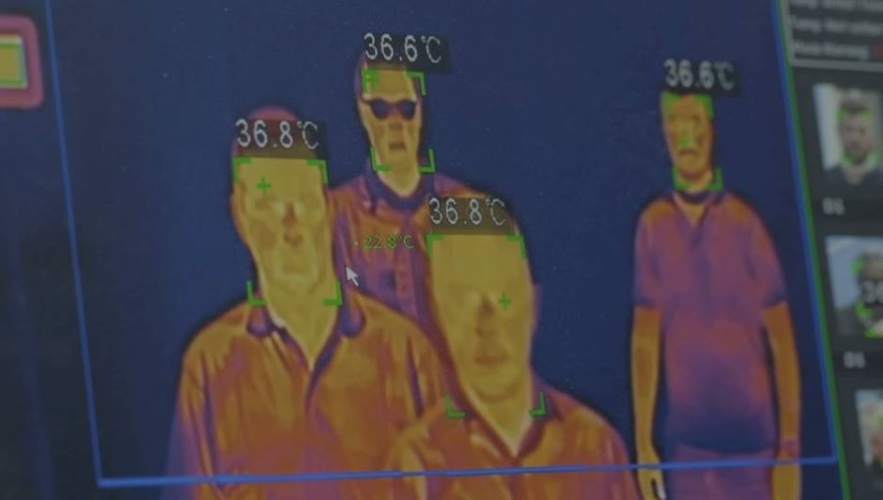
A key indicator of COVID-19 is an elevated temperature, so by monitoring the body temperatures of staff to within a specific range on entry to site, the cameras are able to help detect and prevent the potential spread of the virus within Network Rail’s workforce.
Workplace distancing tech takes off
MORE ON THE ENGINEERING RESPONSE TO COVID-19 HERE
The thermal detection solution combines a highly sensitive thermal imaging camera with calibration and monitoring equipment to ensure that raised temperatures in staff are detected. The technology gives an indication of an individual’s body temperature to within +/- 0.3°C, so that staff at critical sites can identify anyone potentially carrying the COVID-19 virus.
“[If] The system detects an individual with a high temperature, 37.8°C or higher, an audio and visual alarm are triggered,” said David Taylor, Network Rail Account Manager, Thales. “The individual is then instructed to wait in a cool, safe place for 15 minutes after which they then retest. If their temperature is above the threshold then the individual is asked to go home and follow the current government guidance.”
The cameras, which work in a range of light conditions and in real-time, are capable of measuring the temperature of up to 30 people simultaneously.
According to Taylor, the camera works at ranges typically between two-to-five metres and that the temperature threshold is set upon the latest scientific advice. He added that system installation, configuration and familiarisation typically takes half a day, but can vary depending on where the thermal detection system is to be located and whether a temporary or permanent installation.
As part of its COVID-19 mitigation strategy, Network Rail has also piloted Mind the Gap, a social-distancing app developed by Hack Partners whose solution uses ultra-high frequency sounds and Bluetooth to calculate the distance between mobile phones. The app has no user-tracking in place so no sensitive data is collected, stored or shared.




Glasgow trial explores AR cues for autonomous road safety
They've ploughed into a few vulnerable road users in the past. Making that less likely will make it spectacularly easy to stop the traffic for...